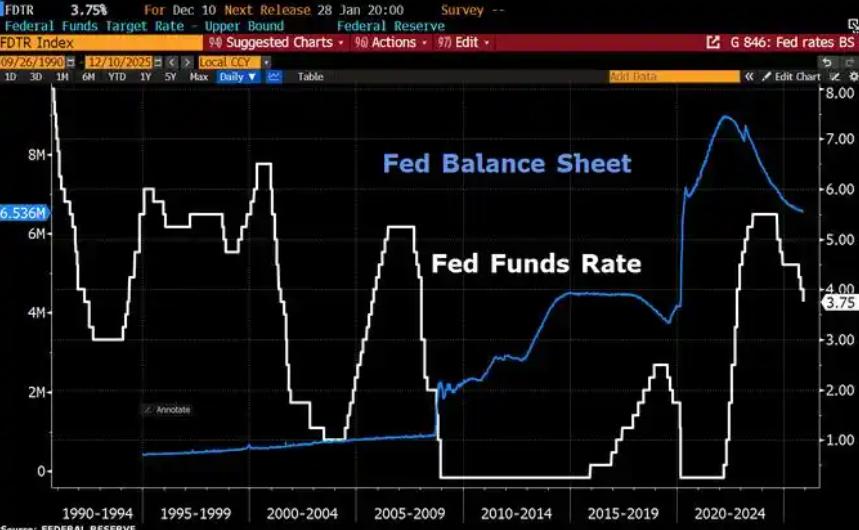
On the stage of global financial markets, the ECB's every move is always in the spotlight. Today, the ECB is widely expected to cut rates on October 17, 2024, and the market is betting that the probability of a 25 basis point rate cut in October has soared to 90%. This strong expectation is like a boulder thrown into a calm lake, creating layers of waves in the financial field.
The ECB's monetary policy decisions have a profound impact on the European and global economy. Cutting interest rates is often seen as a way to stimulate economic growth. In the current economic situation, the market's high expectation of the European Central Bank's interest rate cut is not unfounded. On the one hand, the European economy faces many challenges. Uncertainty over global trade tensions, geopolitical risks, and structural issues within some European countries have weighed on growth. Weak economic growth is often accompanied by low consumption and investment, companies are less willing to expand, and unemployment is likely to rise. In this case, the European Central Bank by cutting interest rates to reduce financing costs, is expected to stimulate business investment and household consumption, thereby boosting economic recovery.
However, an ECB rate cut is not without risks. First, a low interest rate environment could fuel asset bubbles. In the expectation of interest rate cuts, funds may flow into asset markets such as real estate and stocks, pushing up asset prices. If asset prices rise too fast and are disconnected from economic fundamentals, bubbles can form. Once the bubble bursts, it will have a serious impact on financial markets and the real economy. Second, a prolonged period of low interest rates could undermine banks' profitability. The main business of the bank is to take deposits and make loans, and the interest rate is its main source of income. Cutting interest rates will reduce banks' margin space and reduce their profits. If banks' profitability continues to decline, it could affect their ability to support the real economy.
In addition, the ECB rate cut also needs to take into account the impact of the global economic environment. In the age of globalization, national economies are interdependent. The ECB's monetary policy decisions take into account not only the economic situation within Europe, but also the global economic situation and the policy moves of other major central banks. If the ECB unilaterally cuts interest rates while central bank policies in other major economies remain unchanged, it could lead to exchange rate volatility and affect European export competitiveness.
In the face of high market expectations for a rate cut, the ECB needs to find a balance between stimulating economic growth and guarding against risks. On the one hand, the ECB needs to carefully assess the need and timing of rate cuts in light of economic data and market conditions. If economic conditions do warrant a rate cut to stimulate growth, the ECB should act decisively. On the other hand, the ECB also needs to pay close attention to risk factors such as asset price bubbles and bank profitability, and take appropriate regulatory measures and macro-prudential policies to prevent potential risks.
In financial markets, investors also need to be rational about ECB rate cut expectations. Although interest rate cuts may bring certain investment opportunities, they are also accompanied by risks. Investors should reasonably adjust their portfolios according to their risk tolerance and investment objectives. For equity investors, interest rate cuts may boost the stock market, but also need to pay attention to the volatility of the market and valuation risks. For bond investors, interest rate cuts may lead to higher bond prices, but there is also interest rate risk and credit risk to consider.
In conclusion, the high market expectations for the ECB's interest rate cut on October 17 reflect the current challenges facing the European economy and the market's desire for stimulus policies. The ECB needs to weigh various factors when making monetary policy decisions, finding a balance between stimulating economic growth and preventing risks. Investors should also be rational and adjust their investment strategies in a timely manner according to market changes to cope with possible market fluctuations. In the context of the complex and changing global economic situation, the decision of the European Central Bank will continue to become the focus of the financial market, and its impact on the European and even the global economy will continue to emerge.

Since 2022, the Fed has cumulatively reduced its balance sheet by $2.4 trillion through quantitative tightening (QT) policies, leading to a near depletion of liquidity in the financial system.
Since 2022, the Fed has cumulatively reduced its balance sh…
On December 11 local time, the White House once again spoke…
Fiji recently launched its first green finance classificati…
Recently, the European Commission fined Musk's X platform (…
At the end of 2025, the situation in the Caribbean suddenly…
The U.S. AI industry in 2025 is witnessing a feverish feast…